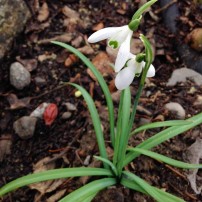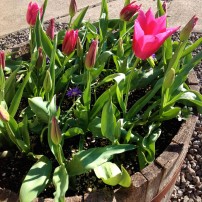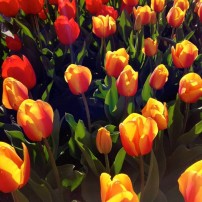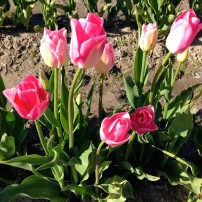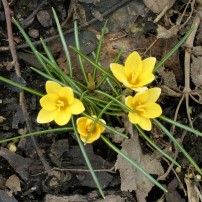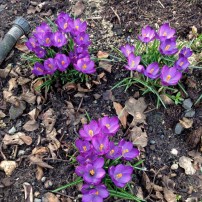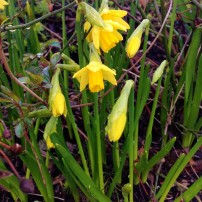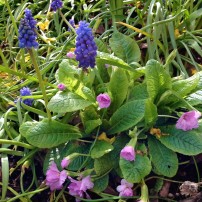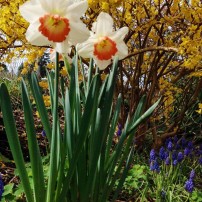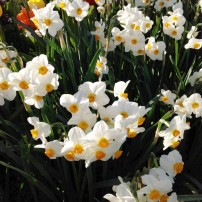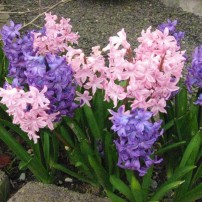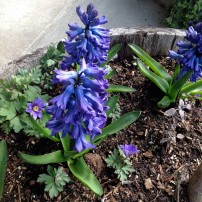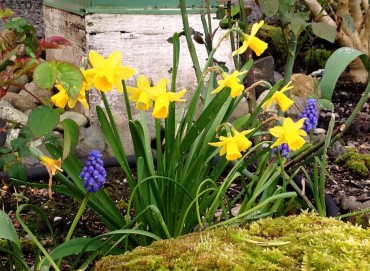
Spring-flowering bulbs provide lots of color with very little effort. From mid-February until late April, the longer and warmer days signal the earth to awaken.
First to bloom are snowdrops then crocus, daffodils, grape hyacinths, hyacinths and dwarf iris. Tulips that bloom during the entire season are available. Other bulbs are also available in catalogs, but this list includes the easiest bloomers.
The secret to this beautiful spring garden is planting in October. But look at your garden now, before most perennials show any signs of growth, and take a few snapshots so you will remember the space that needs a blast of color next spring.
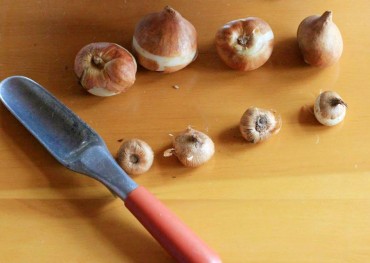
Do you have space for six, 12 or 24 daffodils to brighten up an area? Rather than planting four groups of six, a greater visual impact will be made with one wave of 24 bulbs of one variety.
Then in another area, plan for a second wave of bulbs of a different variety if desired. Succession blooming, for our long spring, can be achieved by planting both early- and late-blooming varieties.
Snowdrops, Galanthus nivalis, are little bulbs that enjoy much popularity in Wales and England, a climate not unlike our own. They are becoming more popular in North America as well. Plant a few in an area near your home entry so you do not miss the little flowers emerging before most other garden plants. They prefer shade in the summer and as much sun as possible in February.
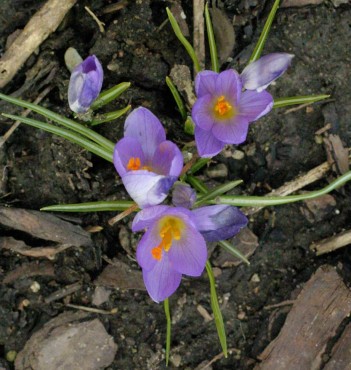
Crocus is in a group of spring-flowering plants that are grown from corms. Corms have a dense underground stem with dry scales, shaped much like a flattened sphere — unlike true bulbs, such as tulips, that have a short, underground stem covered by fleshy leaf bases containing stored food. Both bulbs and corms should be planted with the pointed end up and the flat end down.
Planting Considerations
Bulbs and corms are perennial under the right conditions.
Sandy loam soil and good drainage are required for all bulbs and corms. Bulbs will rot if planted in a low, wet spot or under a downspout.
Full sun early in the season produces the best flowers. Many bulbs flower before deciduous trees and shrubs break bud and leaf out, so consider these spaces for your bulbs.
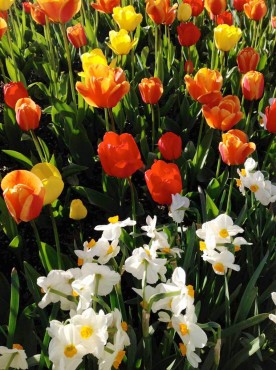
Potential problems to consider include planting in a site with poor drainage. This causes the bulb to rot before roots form and growth occurs.
Mice and other rodents can decimate newly planted bulbs. Use a precaution if your area is known to have this problem.
Planting too late in the fall can cause the blooms to be delayed the first year or can also cause bulbs to fail to produce blooms.
Successful Spring-Flowering Bulbs
Alliums, a true bulb, are also known as an ornamental onion. They have tall, flowering stalks. Groups of three look stunning.
Crocuses, grown from a corm, are very popular in this category. Their short stature makes them a good choice for a pop of color along a garden path or in a rock garden.
Snowdrops, tiny true bulbs, respond to soaking for 24 hours immediately before being planted. Do not plant them in the very hot, dry area of your garden. They prefer moisture and will spread if given a cool, moist location.
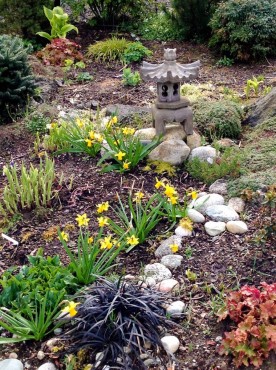
Dutch hyacinths are sold as a large, true bulb. The growth habit is compact and upright. The fragrance of most hyacinths is unmistakable. Slugs can be a problem when the shoots are emerging in the spring.
Muscari, commonly known as grape hyacinths, are ideal for planting at the front of mixed borders and in rock gardens. In West Sound, they can nearly become invasive after a few seasons.
Narcissus, commonly called daffodils, are true bulbs that need to be planted as early as possible in the fall and must grow in well-drained soil. They respond well to slightly acidic soil and need the consistent water provided by fall rains.
Hybrid tulips benefit from bulb fertilizer when planted. After flowering, deadhead and allow the foliage to wither and dry naturally if you expect the bulbs to flower the next year. Some people replant them after one or two years to get the best blooms.
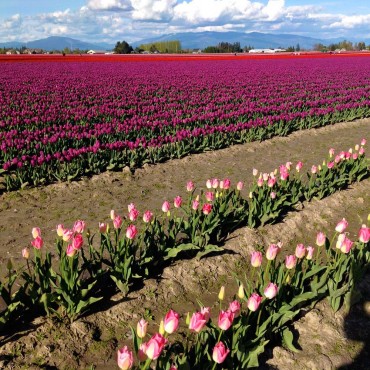
Planting Guidelines
You may plant bulbs as closely as you prefer, as long as they are not touching. Planting tulips, a rather short-lived perennial, in a large container will give a dramatic effect if you plant bulbs closely. Daffodils in the ground require more space between individual bulbs due to their long-lived and multiplying tendency.
Bone meal and organic bulb food are the best fertilizers for bulbs. Mix one of these amendments into the area soil or put a pinch into your planting hole. Do not substitute chemical fertilizer in the hole as this is too concentrated and may cause delay in root formation.
Each type of bulb you purchase will have a planting depth indicated on the container. This depth means the distance from the soil level to the top of the bulb.
Skagit Valley Tulip Festival
The month of April is prime time to indulge your senses at the Skagit Valley Tulip Festival. Acres of tulips that are grown for the cut-flower trade are on display and available for sale at some farms. They do not sell bulbs for planting.




